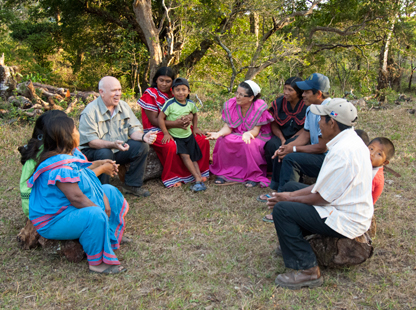
Explain why the notion that cultures can be distinguished as either “oral culture” or “written culture” (19) is a mistaken understanding as to how culture works, according to Chamberlin and your reading of Courtney MacNeil’s article “Orality.
Stories are important. They allow us to relive our past. They allow us to pass on valuable lessons and meaning onto our families and our communities. Orality is a greatly powerful medium of which folks can use to tell stories while enabling a much richer and perhaps more fulfilling understanding of it. It is simply dismissive to describe oral culture as inferior.
Here is a quote from a group of folks who go preach of biblical stories using a very important medium:
—
As Courtney MacNeil quotes a book in her article, there is a lot that is often overlooked in orality. There exist qualities that are present in this form of communication that make it unwise to simply dismiss it as a primitive form of communication. Orality allows a listener to gather information from many more sources than just “written words on a paper”.
Orality is the manifestation of a gestural mode, of a corporeality and a subjectivity within language. With the means of the spoken within the spoken. With the means of the written within the written. (Wesling and Slawek 159)
All cultures include a form of storytelling, in several mediums: orality, and literature. The two differ only in the sense that one is perhaps more easily communicable with outsiders (given the utility of the world wide web). It is certainly wrong to come to the conclusion that cultures whose stories are primarily of the oral form are primitive. If anything, it is orality that is superior in its ability to tell a story and evoke feelings and thoughts beyond which one would experience while reading literature. It is the effect of body language, emotion, tone of voice, hastiness, and emphasis from which a listener could tap into to receive a much deeper understanding of a story to be told.
In my opinion, when it comes to conveying information to other parties on the topic of sciences, the primary quality of importance is replicability. Scientific works in the written format are excellent as they will have no minor details changed upon the distribution of the information. In a story, however, it often does not matter whether a particular subject was blue in colour or yellow, or whether it was 4:00 pm or 5:00 pm during which something occurred, but rather the emotions, physical reactions and other senses of information that constitute qualities which help tell a story.
Orality allows for a teller to really convey the information from their heart. After all, “storytelling has been, and continues to be, the foundation of human culture“.
Works Cited
Austin Hackney, Jennifer, Hi Jennifer, Hi Alain, and Alain Ruche. “The Oral Tradition of Storytelling.” Austin Hackney: Writer, Storyteller, Fabulist. Austin Hackney, 19 Oct. 2019. Web. 16 Apr. 2020.
Reaching the oral majority. Digital Image. ORALITY. Web. Date March 31 2020.
Wesling, Donald, and Tadeusz Slawek. Literary Voice: The Calling of Jonah (SUNY Series, the Margins of Literature). N.p.: State U of New York, 1995. N. pag. Print.